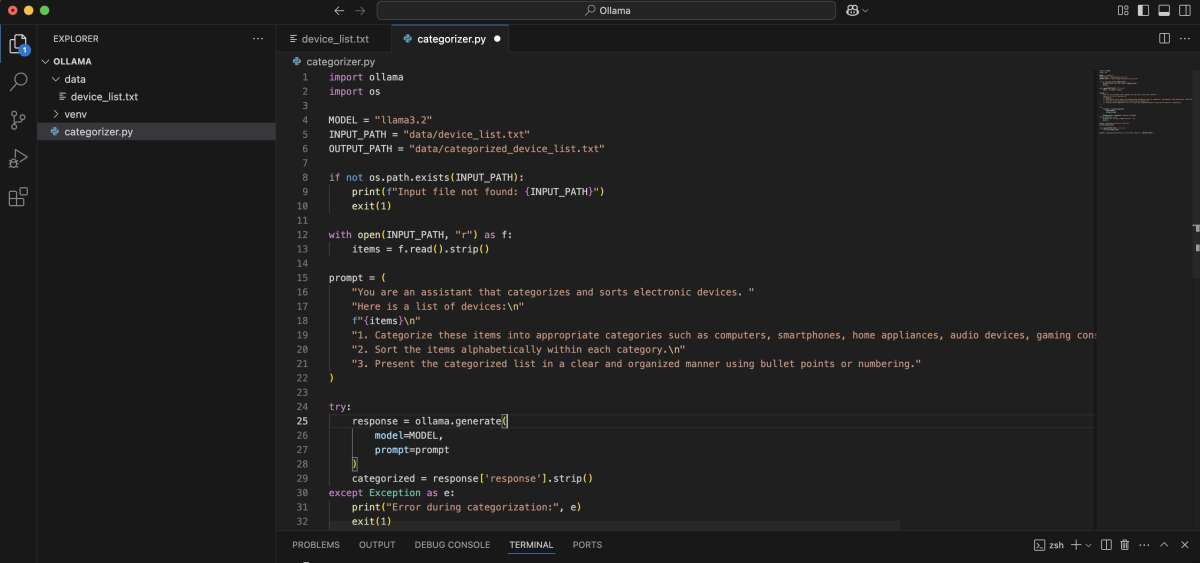In this article, we'll build a practical, local LLM-powered application: an electronic devices list organizer that automatically categorizes items using Ollama and the Llama 3.2 model. You'll see how to read raw data, design a prompt, interact with the model, and output a neatly organized result—completely offline.
Overview
Suppose you have a simple text file containing an uncategorized list of electronic devices. Our goal is to use Ollama's local LLM capabilities to:
- Read the device list from a file
- Prompt the LLM to sort and categorize the items (e.g., computers, smartphones, home appliances, audio devices, etc.)
- Output the categorized, alphabetized list both to the terminal and a new file
This project demonstrates how local LLMs can help automate everyday tasks, and how easy it is to swap models or prompts for different results.
Project Structure
device_list.txt: Your raw electronic device items (one per line)categorized_device_list.txt: The output, neatly categorizedcategorizer.py: The main Python script
Example Input (data/device_list.txt)
The Categorizer Python Script
Create categorizer.py as follows:
Running the Application
Activate your environment and run:
You'll see both the terminal output and a new file data/categorized_device_list.txt containing the neatly organized device list.
Sample Output
With just a few lines of code and a local LLM, you've automated a real-world task—no cloud, no API keys, and full privacy. Experiment with your own data and ideas!


